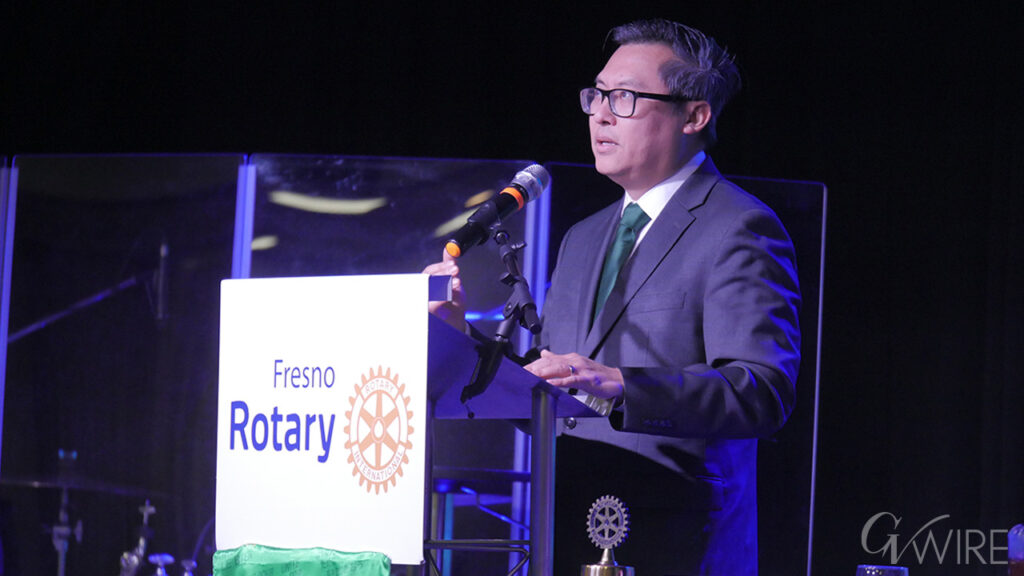Share
Gov. Gavin Newsom likely knows in his gut how devastating Senate Bill 743 will be to California’s housing shortage and the wealth gap dividing our coastal and interior communities.
And, I am certain that the governor knows that trends accelerate in a crisis such as the coronavirus pandemic.
Listen to this article:

Bill McEwen
Opinion
How could he not?
One of Newsom’s gifts is the ability to see the future, stick his neck there, and reap the political rewards of being proven right on controversial issues such as gay marriage and marijuana legalization.
A Dinosaur Law Irrelevant to the New Normal Ahead
But now he is saddled with a law that is a dinosaur. Sewn into a bill to fast-track a new arena for the Sacramento Kings seven years ago, SB 743 goes into effect July 1.
In a nutshell, the law hikes the transportation mitigation fees for builders with projects in urban “green fields,” suburbs, and rural communities by tens of thousands of dollars.
The noble goal is to reduce greenhouse gas emissions, but the legislation is out of touch with the times. And, it discriminates against poor and minority Californians.
As attorney Jennifer Hernandez, who proudly calls herself “a Berkeley Democrat,” told my GV Wire colleague Jim Jakobs: “It’s not a good day for minority Californians seeking to acquire homeownership. It’s not about greenhouse gas, it’s about forcing people into elevator buildings as renters, and riding the bus.”
VMT Plan Ignores Telecommuting, Green Vehicles
Moreover, this flawed implementation plan doesn’t account for telecommuting nor for increasingly popular electric and hybrid vehicles. It looks at the number of units in a proposed development and calculates how many miles residents there will drive to work, school, shopping, and entertainment. The “Vehicle Miles Traveled” average determines the transportation fee charged the developer, who passes the fee onto home buyers.
It doesn’t matter what kind of vehicle your drive — a belching, 30-year-old, three-quarter-ton diesel pickup or a clean 2020 all-electric mini-SUV — the state only cares about how many miles it expects you to drive if you move into a new development.
The plan works for large urban areas with downtowns with huge job centers. In fact, it might well lower fees for builders there. But the plan’s one-size-fits-all approach erects new economic hurdles for residents in rural California — exacerbating the coastal-inland divide.
Newsom Rose on Seeing the Future. Has He Lost That Skill?
Gov. Newsom should be concerned when state Sen. Anna Caballero, one of the smartest people in the Legislature, is leading the drive to delay the plan.

“Everything we are doing at the state government level now is through the lens of COVID-19. We have changed how we work, but we must also change our approach to solving global issues like climate change, the digital divide, and more by running it through the COVID-19 perspective.” — state Sen. Anna Caballero, D-Salinas
In a visionary op-ed on the lessons of the coronavirus pandemic, without mentioning SB 743 or VMT, Caballero documented how out of touch the plan is with today’s realities.
“Policymakers in California accept office space working, likely because we all harbor that old-fashioned bias. We pass legislation to encourage housing development along public transit in urban areas on the premise that this will reduce transportation-based emissions from super-commuters,” Caballero wrote.
“Think of the local sales and property tax coffers for rural communities, if the high-tech workforce smartly distributed itself across California. Think of college graduates that could return to their rural communities and bring home an influx of intellectual capital and income. Broadband internet infrastructure would be as ubiquitous as water and energy. Small businesses and health care services would grow, as per capita income increases. These residents would be part of a community, instead of spending their family and free time in pollution-causing commutes.
“Everything we are doing at the state government level now is through the lens of COVID-19. We have changed how we work, but we must also change our approach to solving global issues like climate change, the digital divide, and more by running it through the COVID-19 perspective.”
High-Tech Workers Embrace Telecommuting
Not only does Newsom’s implementation plan overlook telecommuting, but it also penalizes rural communities for trying to grow and to entice high-tech and medical workers back home.
According to an anonymous survey of 4,400 tech workers, conducted by Blind, Bay Area tech workers are chomping at the bit to move to less expensive, more liveable places. The survey found that two-thirds of employees would consider leaving the Bay Area if they had the option to work remotely. In addition, Facebook, Twitter, and Square have said their employees can work from home forever.
Perhaps the only thing stopping Newsom from delaying and reworking VMT to fit the future is loyalty to his team. The state Office of Planning and Research has worked hard on the implementation and those responsible for the plan want to see their labors rewarded.
That, of course, is not a good reason to push full steam ahead with a flawed plan.
“Absolutely, we see this (pandemic) as an opportunity reshape the way we do business and how we govern,” Newsom said in April.
Time is running out for Newsom to look ahead and make good on his words.
[activecampaign form=19]



















